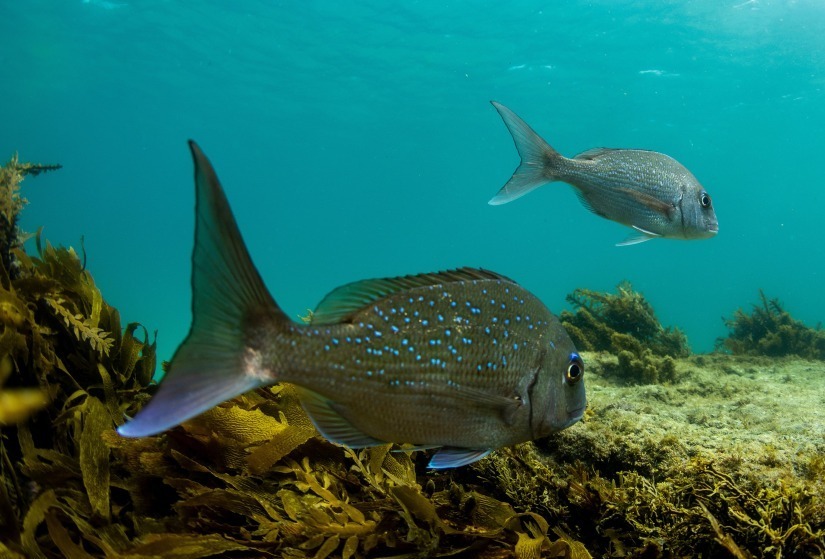Westport has established a $13.5 million partnership with the Western Australian Marine Science Institution (WAMSI) to deliver the WAMSI-Westport Marine Science Program; one of the largest research projects ever undertaken in Cockburn Sound.
WAMSI collaborates with academic science organisations, including universities, to deliver science that is independent, rigorously peer reviewed and publicly available. The WAMSI-Westport Marine Science Program is delivering a comprehensive research program that fills important knowledge gaps about Cockburn Sound’s ecosystem.
The marine science produced through the WAMSI-Westport Marine Science Program is being utilised across the Westport program by:
- significantly influencing the design of the port terminal and marine infrastructure and planning for the construction and operation activities that avoid and minimise environmental impact to the greatest extent possible;
- providing the critical science, data and modelling inputs underpinning our robust State and Commonwealth Environmental Impact Assessments (EIA); and
- providing the research, mapping and restoration approaches to ensure the design of our environmental program, including substantial seagrass restoration, has the best chance of success.
Importantly, all of the reports and data produced through the WAMSI-Westport Marine Science Program are published upon completion, ensuring this transparent and robust science is available for government and industry to utilise for the better management of Cockburn Sound for all.

Key objectives of the WAMSI-Westport Marine Science Program
Recognising the importance of Cockburn Sound, the $13.5 million partnership has been designed to:
- Establish environmental baselines and improve understanding of key ecological processes in Cockburn Sound.
- Help shape the design concept for the new port and marine infrastructure to get strong environmental outcomes.
- Inform port development and environmental mitigation strategies.
- Support on-ground ecosystem and restoration research and trials to inform a long-term restoration plan.
Research themes
The more than 30 projects within the marine science program cover nine research themes.
Objective
Develop an ecosystem model to understand how water quality and habitats may change under various possible future scenarios.
Projects
1.1 Integrated ecosystem model platform.
1.2 Pathways to productivity: Development of a water quality response model for Cockburn Sound.
1.3 Characterise the trophic structure, ecosystem attributes and functioning of Cockburn Sound, using conceptual, qualitative, and quantitative ecosystem models.
Objective
Improve our understanding of benthic communities and processes, with a focus on seagrass rehabilitation and restoration.
Projects
2.1 Benthic Habitat mapping.
2.2 Pressure-response relationships, building resilience and future proofing seagrass meadows.
2.3 Seagrass restoration program.
2.4 Benthic communities in soft-sediment and hard substrates (baseline data, pressure-response relationships of key biota for Environmental Impact Assessment (EIA), and mitigation strategies for artificial reefs.
Objective
To develop a comprehensive environmental baseline and understand contaminants, nutrient sources, and recycling.
Projects
3.1 Water and sediment quality monitoring.
3.2 Processes governing nutrient and contaminant cycling in Cockburn Sound.
3.3 Elements of the groundwater/surface water flux into Cockburn Sound
Objective
Understand seasonal movements of key species, the habitats they seek out and the food they rely on.
Projects
4.1 Snapper connectivity and evaluation of juvenile stocking.
4.2.1 Spatial distribution and temporal variability in life stages of key fish species in Cockburn Sound.
4.2.2 Zooplankton in Cockburn Sound.
4.2.3 Trophic pathways and food web structure.
4.3 Investigating effects of climate change on biota in Cockburn Sound.
4.4 Effects of total suspended solids on key fish species.
4.5 Investigating effect of Westport Development on invasive species risks to Cockburn Sound.
Objective
Understand how water quality and circulation in Cockburn Sound may change due to Westport and climate change.
Projects
5.1 Hydrodynamic modelling.
Objective
Identify and understand the community values connected to Cockburn Sound.
Projects
6.1 Community values for changes in environmental conditions.
6.2 Opportunities and impacts for recreational fishing from the Westport development.
6.3 Recreation, amenity and aesthetic values.
6.4 Benefit-cost framework for environmental port design features.
Objective
Develop current and future underwater ‘soundscapes’ of Cockburn Sound to understand, and manage, the potential effects of underwater noise.
Projects
7.1 Baseline soundscape, sound sources and transmission.
7.2 Hearing sensitivity of Australian sea lions, little penguins, and fish.
7.3 Behavioural response of fish to noise.
Objective
Improve our understanding of the distribution and seasonal movements of conservation-significant and iconic species, the habitats they seek out and the food sources they rely on.
Projects
8.1 Determining the diet, causes of mortality, foraging habitat and home range of little penguins using Cockburn Sound.
8.2 Investigate the abundance, movement, habitat use and diet of Australian sea lions in the Perth Metropolitan area.
8.3 Spatio-temporal distribution of key habitat-uses and key prey species for Indo-Pacific bottlenose dolphins in Owen Anchorage and Cockburn Sound, including a fine-scale understanding of the use of the habitats in the Kwinana Shelf.
8.4 Spatio-temporal distribution of syngnathids (e.g., seahorses) in Cockburn Sound.
Objective
Better understand patterns and drivers of sediment transport and the processes of beach accretion and erosion in Cockburn Sound and Owen Anchorage.
Projects
9.1 Coastal processes and sediment movement in Cockburn Sound and Owen Anchorage.
